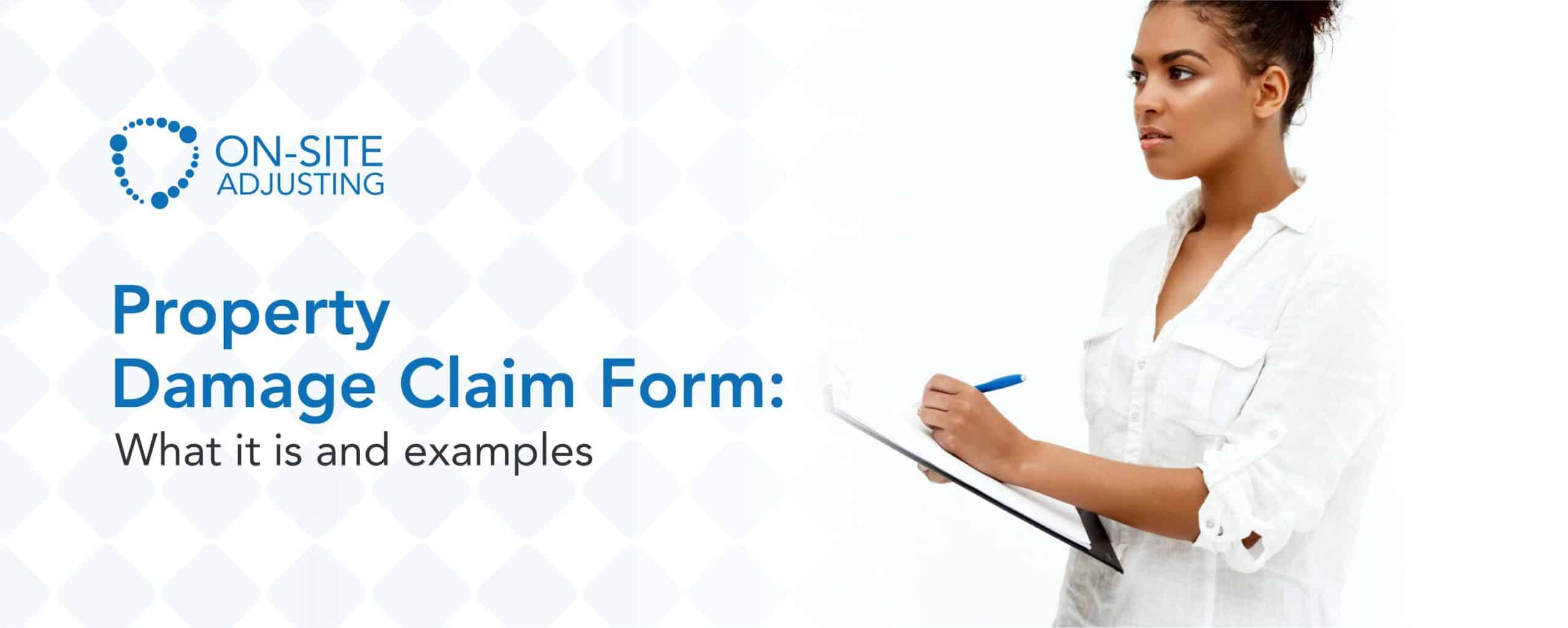
When dealing with properties in any capacity, you will often come across some damage. As a property manager, tenants may damage parts of their homes. Additionally, viewers may damage a house you’re showing as a real estate agent. Organization is crucial when dealing with any damage and the insurance claim that follows. A property damage claim form can help you stay put together.
For insurance claims, it is best to contact a public adjuster. They can assist you with filing and negotiating your claim. In this article, you will discover what a property damage claim form is. We will also tell you what information to include. Additionally, we will break down the process of creating one.
What is a Property Damage Claim Form?
A property damage claim form is a document used to report and request compensation for damage to properties. It serves as an official and extensive record of the damage. For anyone dealing with a property, this form is crucial for maintaining accurate records. Furthermore, it enables you to handle property damage issues promptly.
The form typically includes details about the incident and the property affected. It should also contain the estimated cost of repairs. The essence of this form is that it helps you to organize important information. Additionally, it helps you determine how serious the damage is and how to go about repairs. Therefore, the form helps streamline the insurance claims process or any legal actions you decide to pursue.
Not only property managers and real estate agents need a property damage claim form. Landlords, insurance companies, and sublessors can benefit from having a claim form.
Feeling stuck with your claim? You don’t have to fight alone.
Reach out to us — we will review your claim for free and help you understand your options
What to Include in Your Property Damage Claim Form
Creating an effective property damage claim form requires attention to detail. Here are the key components to include:
Property Information
Include the address, owner’s name, and any relevant identification numbers. This establishes the property in question. It is a non-negotiable for a solid property damage claim form. Additionally, you can include other property information such as the type and size of the property. This can be useful if you deal with both commercial and residential properties.
Claimant Details
List the name, contact information, and role of the claimant. This could be a tenant, property manager, or the property owner. Knowing who caused the damage can be helpful in navigating the situation.
Date and Time of Incident
Clearly state when the damage occurred. This helps in assessing the timeline and context of the incident. This information will also be crucial for an insurance claim. This is because insurance companies usually have a set timeline within which you can file a claim.
Description of Damage
Request a thorough description of the damage. Ask for specifics about what was damaged and the extent of the damage. You should also request the type of damage. For example, it could be fire damage or structural damage.
Photographic Evidence
Ensure that there are photos of the damage. Visual evidence strengthens your claim and provides clarity to the insurer. Therefore, request clear and detailed videos and photos of the affected area.
Repair Estimates
Ensure you use only reputable contractors to get repair estimates. These estimates help you determine the financial impact of the property damage. Attach the estimates to your property damage claim form.
Witness Information
Sometimes, there are witnesses to property damage. Therefore, If applicable, include details of any witnesses. Their statements may support your insurance claim.
Insurance Information
List the insurance policy number and the name of the insurance provider. This helps in processing the damage through the appropriate channels.
Claimant Signature
A signature verifies that the information provided is accurate and complete. If the claimant provides any wrongful or negligent information, a signature helps you seek legal action. That is because it serves as the claimant’s endorsement and is legally binding.
How to Create a Claim Form
Creating a property damage claim form can be straightforward. Follow these steps:
Select a Format
Choose whether to use a digital or printed format. Digital forms can be more easily shared and stored. If you are using a digital format, ensure it is mobile-friendly. This is because most people complete forms on their mobile devices rather than laptops.
Design the Layout
Organize the form with clear sections for each component listed above. Use headings and bullet points for clarity. Furthermore, you can ensure headings are in bold to draw attention.
Use Simple Language
Ensure that the language is straightforward. Avoid jargon that may confuse the claimant. You can use tools such as Hemingway to monitor readability levels. As a rule of thumb, your readability levels should not exceed Grade 9.
Include Instructions
Provide clear instructions on how to fill out the form. Specify any documentation needed alongside the form. Clearly mark any mandatory or optional fields so no needed information is left out.
Test the Form
Before finalizing, test the form with colleagues. This ensures it’s user-friendly and collects all necessary information.
Update Regularly
Periodically review and update the form to reflect any changes in policy or procedures. This is easier to carry out if your form is in a digital format. You can also encourage claimants to give feedback on the form. Doing so can help you further streamline or extend the form as needed.
Property Damage Claim Form Templates
Creating a property damage claim form from scratch can be tasking and time-consuming. Therefore, using templates can save time and ensure consistency. Here are a few digital templates you should consider:
Jotform

Jotform’s template is easy to use and edit. You do not need any coding to adjust the template to your preferences. You can also include additional sections and headings. The best part? It is free to download and use.
Visme

Visme’s template allows you to add animation and links to your form. This means you can make it as snazzy as possible. The template is available for download in PDF, JPG, PNG, and HTML5 formats. However, you need to create an account before you can access the template.
Lark

Lark provides a comprehensive property damage claim form template. You should know that you need to sign up to access this template. Nevertheless, after signing up, you can customize the template to your taste. Additionally, you do not need to attach a credit or debit card to your free account.
Content Snare

Content Snare is a paid platform that boasts automatic reminders and auto-saving. This means that no information gets lost along the way. Furthermore, it provides a comments and questions section. This means that claimants can get answers to their questions without having to contact you directly. It costs $39 a month for a basic plan. Although this is a little pricey, it is a worthy investment.
Using these templates, you can create efficient and effective property damage claim forms tailored to your needs. Having a well-structured claim form aids in faster processing. Furthermore, it enhances professionalism in handling claims.
Conclusion
One can never overstate the importance of organization and quick action when it comes to damage. A property damage claim form helps you attain both. It is an official record and an information pool all at once. It also helps you streamline your damage repair process. Ensure you put the templates in this article to use to make your life a little easier.
You do not need to manage your property and insurance claims at the same time. On-Site Adjusting should be your best friend as someone in charge of a property. This is because we offer both damage repair and public adjusting services. Reach out to us for a free consultation today.












